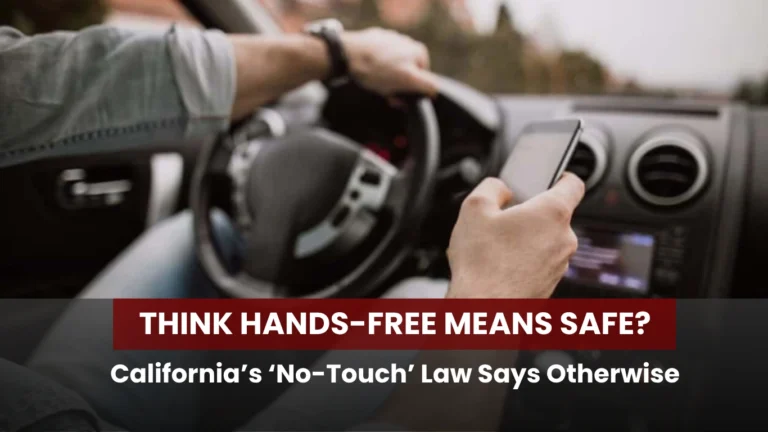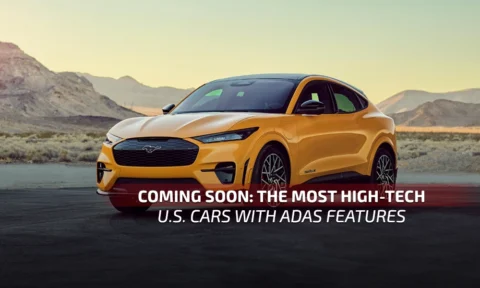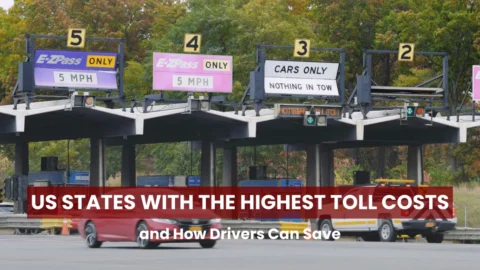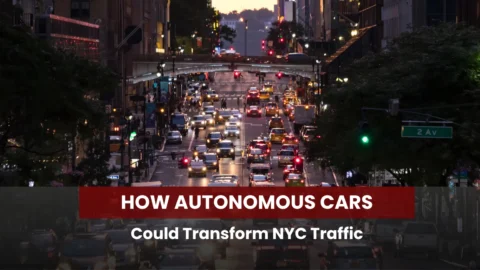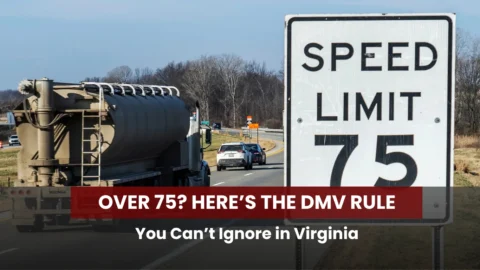You’ve probably heard the advice, “Don’t hold your phone while driving, use hands-free,” many times. But in California, the rules have gotten a lot stricter this year, with the no-touch phone driving law receiving further clarifications in 2025. As of June 2025, a California appeals court decision has made it clear: “holding a cellphone while driving for any reason — even at a red light or for navigation — is illegal.”
This shift marks a new era in the California no-touch phone law. The state’s hands-free driving law is no longer just about forbidding texting or calls. It now also prohibits any physical contact with your phone while you drive. In short, there’s no holding a phone while driving in California. If this sounds extreme, that’s the point. California’s courts and lawmakers are betting that eliminating gray areas is the only way to ensure California’s distracted driving law becomes more effective.
So let’s unpack what’s changed, why it matters, and how you (as a driver) need to adapt, with the law, best safety practices, and real consequences in mind.
What Does California’s “No-Touch” Ruling State?
The legal background: From “operating” to “holding”
Prior to 2025, California’s distracted driving law (notably California Vehicle Code § 23123 / 23123.5) forbade the “use,” “operation” or “manipulation” of handheld wireless devices while driving, especially for texting, calling, browsing, etc. But the statute left room for interpretation. Many drivers believed, and some courts agreed, that if you simply held your phone (without tapping, texting, or dialing) or glanced at a map, you weren’t actively violating the statute.
That changed with a pivotal appeals court decision in June 2025, when the California Court of Appeals clarified that holding a phone for any reason while driving, even to check navigation, violates California’s hands-free law.
In effect, the interpretation now draws no distinction between actively manipulating your phone (texting, tapping, swiping) and passively holding it. The court reasoned that allowing a driver to hold a phone to view a mapping application, even if not touching the screen, would be contrary to the Legislature’s intent.
Hence, the term “no touch” cell phone law forbids any handheld contact while the vehicle is in operation (including when stopped at lights).
Key requirements and restrictions
Under the new interpretation of the California hands-free driving law / no touch phone driving law 2025:
- Your phone must be mounted (e.g., to a windshield, dashboard) in a manner that doesn’t obstruct your view.
- While driving (or stopped in traffic), you may only perform a single tap or swipe on a mounted device to activate or deactivate a function, but no prolonged interactions or holding.
- You may use voice commands for calls, texts, or navigation.
- The prohibition applies even at a red light or stop sign, where you can’t hold the phone even while waiting for the light to turn green.
- Exceptions include emergency calls (such as dialing 911) or when the vehicle is safely parked.
- For drivers under age 18, stricter rules apply. They are prohibited from using any phone (handheld or hands-free) while driving.
So, when you hear California’s distracted driving law in 2025, remember it’s no longer just about texting or dialing. It means any handheld contact is forbidden.
Why This Change Matters — Going Beyond Just Legal Fines
Safety first — eliminating ambiguity
One of the primary motivations behind this ruling is public safety. Distracted driving continues to cause serious crashes, injuries, and fatalities across the US, despite hands-free driving laws being in place. Even momentary glances at a phone, especially when held, can lead to disasters on the road.
By removing the vagueness around “active use vs passive use” when it comes to phones, the “no-touch” ruling aims to force motorists to keep their eyes on the road and hands on the wheel, minimizing the risk of misuse of the loopholes in the law.
Closing loopholes
Previously, drivers might argue they were simply holding their phone to view a map, or changing songs, or taking a quick glance, without tapping, and were thus within the purview of the law. That loophole is now closed. The ruling makes that behavior a violation of the law.
This closure aligns California with a trend across many U.S. states that now adopt “no-touch” or comprehensive hands-free laws, moving beyond bans on texting alone.
Enforcement becomes “primary”
Under this legal regime, the no-touch phone law is enforceable as a primary offense. That means officers may stop a driver solely for holding a phone, even if no other violation is observed. That’s a big change as it removes the need for officers to first see a separate traffic violation (like speeding) to issue a citation.
Penalties, Fines & Consequences
What happens if you’re caught violating this stricter ruling on the California no-touch phone law? Penalties vary, but here’s what current sources indicate the penalties under the distracted driving laws of California in 2025 are likely to be:
- For a first offense, the base fine is relatively small, often cited at $20, but once court fees, assessments, and penalties are added, it tends to balloon to over $160+.
- On subsequent offenses, the base fine moves to about $50, and total fines (with additional costs) may exceed $280.
- Multiple violations within a 36-month period may lead to points on your driver’s record, which can increase insurance rates and escalate consequences.
- For commercial drivers or repeat offenders, stricter penalties may apply under additional statutes.
Beyond fines and points, there’s also reputational and safety risk. Being ticketed can affect settlement eligibility in accidents and your insurance premiums.
How to Comply Safely Under the New “No-Touch” Cell Phone Law
Adapting to the no-touch regime in California is mostly about planning and setup:
1. Mount your phone properly
Use a dashboard or windshield mount (within legal limits) so your device is within view, without having to hold it.
2. Rely on voice controls
Use hands-free voice commands (Siri, Google Assistant, etc.) to initiate calls, respond to messages, or get navigation directions rather than touching the screen.
3. Limit taps to one
You may perform one “single tap or swipe” on the mounted device to activate a function. Avoid multiple interactions or scrolling.
4. Preconfigure before driving
Set your route, playlist, or reminders before you start your drive, so minimal interaction is needed en route.
5. What to do if you need to interact more
Pull over to a safe location first. Then you can freely use your phone without violating the no-touch law.
6. Know the exceptions
Emergency calls are always allowed. Also, this law doesn’t apply when your vehicle is completely parked, not just stopped in traffic.
The “Big Picture”: Hands-Free Driving Laws in the U.S.
California’s more rigorous interpretation joins a broader national shift. Many states already have hands-free driving laws or no-touch cell phone law statutes in place, but their breadth and enforcement vary.
According to the IIHS (Insurance Institute for Highway Safety), comprehensive laws that prohibit holding an electronic device tend to be more effective than laws that only ban texting or talking.
In that context, California’s move is part of a trend toward zero tolerance for handheld device distractions. The underlying goal is to reduce crashes, encourage consistent behavior, and reduce the ambiguity that has long hampered enforcement.
Challenges & Criticisms
No law is perfect, and this one has its skeptics:
1. Overreach concerns
Some argue that forbidding passive holding (e.g., glancing at a map) may be too strict, especially for drivers unfamiliar with full voice-control or older vehicles lacking modern integration.
2. Enforcement practicality
It may be tough for officers to reliably determine whether a driver is just holding a phone or interacting with it. Legal challenges and appeals are likely to emerge.
3. Equity and technology access
Not all drivers have up-to-date phones or vehicles capable of seamless voice activation. Some may struggle to comply if their hardware is outdated.
4. Legal clarity and appeals
The ruling is based on an interpretation by an appeals court. It may still be challenged or narrowed in future cases, or by the California Supreme Court.
Still, for now, it’s safest to assume the stricter standard is here to stay and adjust accordingly.
Frequently Asked Questions (FAQ)
For a first offense, the base fine is typically $20, which escalates (after fees) to over $160+. For subsequent violations, the base becomes $50, with total fines rising above $280+. Multiple offenses may lead to points on your license.
Yes. Under the new interpretation, holding your phone while stopped at traffic signals counts as a violation.
Yes, but only if your phone is legally mounted, and you use voice commands or a single tap/swipe without holding it.
Yes, emergency calls (e.g., 911) are permitted. Also, the law doesn’t apply when your vehicle is safely parked.
The law is stricter for minors: drivers under 18 may not use any phone at all (handheld or hands-free) while driving.
Previously, the statute banned “operating” or “manipulating” a handheld device (texting, dialing, browsing). The new no-touch interpretation prohibits holding the phone at all while driving, even if not interacting with it.
Yes. Law enforcement may stop a driver solely because they are holding a phone, without needing another traffic violation.
Mount your phone legally, use voice commands, plan your route ahead, minimize taps/swipes, and whenever you have to interact further, pull over safely.
Bottom line
California’s updated no-touch phone law leaves no room for interpretation. Whether you’re stopped at a red light or cruising down the freeway, holding your phone is now a ticketable offense. To stay compliant and safe, make sure your device is mounted, rely on voice commands, and avoid physical interaction altogether. Smart setups mean fewer fines, cleaner records, and a smoother ride ahead.
From launches to laws, Ask About Cars keeps you in the driver’s seat — explore what’s moving the auto world today.


